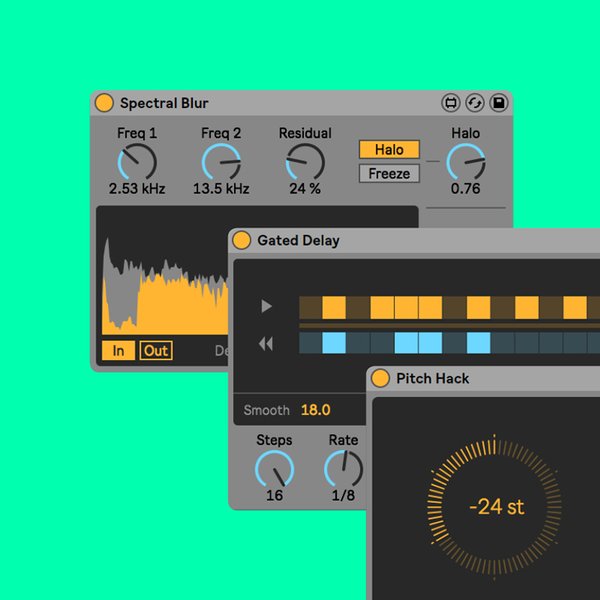When it comes to music production, having a versatile set of audio effects is essential. Ableton Live, a popular digital audio workstation, offers a wide range of built-in audio effects that can elevate your music to new heights. In this article, we will explore some of the most commonly used audio effects in Ableton Live and provide insights on how to incorporate them into your productions.
1. EQ Eight
EQ Eight is a powerful equalizer that allows you to shape the frequency response of your audio tracks. It features eight adjustable frequency bands and various filter types, including high-pass, low-pass, and bell filters. With EQ Eight, you can boost or cut specific frequencies to achieve a more balanced mix, remove unwanted noise, or add creative coloration to your sounds.
2. Compressor
The Compressor is a fundamental audio effect used to control dynamics and add punch to your tracks. It reduces the dynamic range of a sound by decreasing the volume of louder elements and increasing the volume of softer elements. Whether you’re looking to tighten up drums, even out vocal performances, or add sustain to a guitar solo, the Compressor is a go-to tool that can enhance the impact and clarity of your mix.
3. Reverb
Reverb is an indispensable effect for creating depth and ambience in your music. Ableton Live offers various reverb algorithms, including room, hall, plate, and more. By simulating the natural reverberation of different spaces, reverb can give your sounds a sense of space and realism. You can customize parameters such as decay time, pre-delay, and damping to achieve the desired reverb characteristics.
Credit: www.amazon.com
4. Delay
Delay is a time-based effect that produces repetitions of a sound with varying time intervals. It can be used to create echoes, rhythmic patterns, or subtle spatial effects. With Ableton Live’s versatile Delay effect, you can adjust parameters like feedback, filtering, and ping-pong mode to add depth, width, and movement to your tracks. Experimenting with different delay settings can open up a world of creative possibilities.
5. Chorus
Chorus is an effect that creates the illusion of multiple sources playing the same musical part. It thickens the sound by detuning and delaying the original signal, resulting in a wider and richer stereo image. Ableton Live’s Chorus effect offers controls for rate, depth, feedback, and more, allowing you to achieve subtle widening or lush modulated textures depending on your creative vision.
6. Distortion
If you’re looking to add some grit, warmth, or aggression to your sounds, Ableton Live’s Distortion effect is a great choice. It can emulate the characteristics of analog hardware or create entirely new tones. Adjust parameters such as drive, tone, and output level to achieve anything from subtle saturation to fully distorted sounds. Distortion is a versatile tool that can take your tracks from clean to dirty with just a few adjustments.
7. Filter
Ableton Live’s Filter effect allows you to shape the frequency content of your audio in real-time. By using low-pass, high-pass, band-pass, or notch filters, you can control the brightness, darkness, or presence of a sound. The Filter effect offers additional features like resonance, drive, and modulation to further sculpt your audio. It’s a powerful tool for sound design, creating filter sweeps, and adding movement to your tracks.
8. Auto Filter
Auto Filter is a variation of the Filter effect in Ableton Live, specifically designed for modulation and automation. It offers built-in LFOs (low-frequency oscillators) that can modulate the filter cutoff frequency, resulting in dynamic filter movements. Whether you’re aiming for subtle filter sweeps or radical filter modulation, the Auto Filter is a versatile tool that can add interest and movement to your sounds.

Credit: www.ableton.com
Frequently Asked Questions On Using The Audio Effects In Ableton Live: Master Your Sound Creatively
What Are Some Popular Audio Effects In Ableton Live?
Popular audio effects in Ableton Live include reverb, delay, EQ, compression, chorus, and distortion.
How Can I Use Audio Effects To Enhance My Music Production?
Audio effects can be used to add depth, atmosphere, and texture to your music, enhancing the overall listening experience.
What Is The Purpose Of Using Audio Effects In Ableton Live?
Audio effects in Ableton Live help to modify and improve sound by adding creative and technical enhancements to the audio signal.
Can I Automate Audio Effects In Ableton Live?
Yes, you can automate audio effects in Ableton Live to create dynamic changes in the sound throughout your music production.
Conclusion
Ableton Live provides a wide range of audio effects that can help you shape and enhance your music in countless ways. Whether you’re a producer, mixer, or sound designer, mastering the proper use of these tools is crucial for achieving professional-sounding results. By experimenting with EQ Eight, Compressor, Reverb, Delay, Chorus, Distortion, Filter, and Auto Filter, you can unlock a whole new level of creativity and take your productions to the next level.